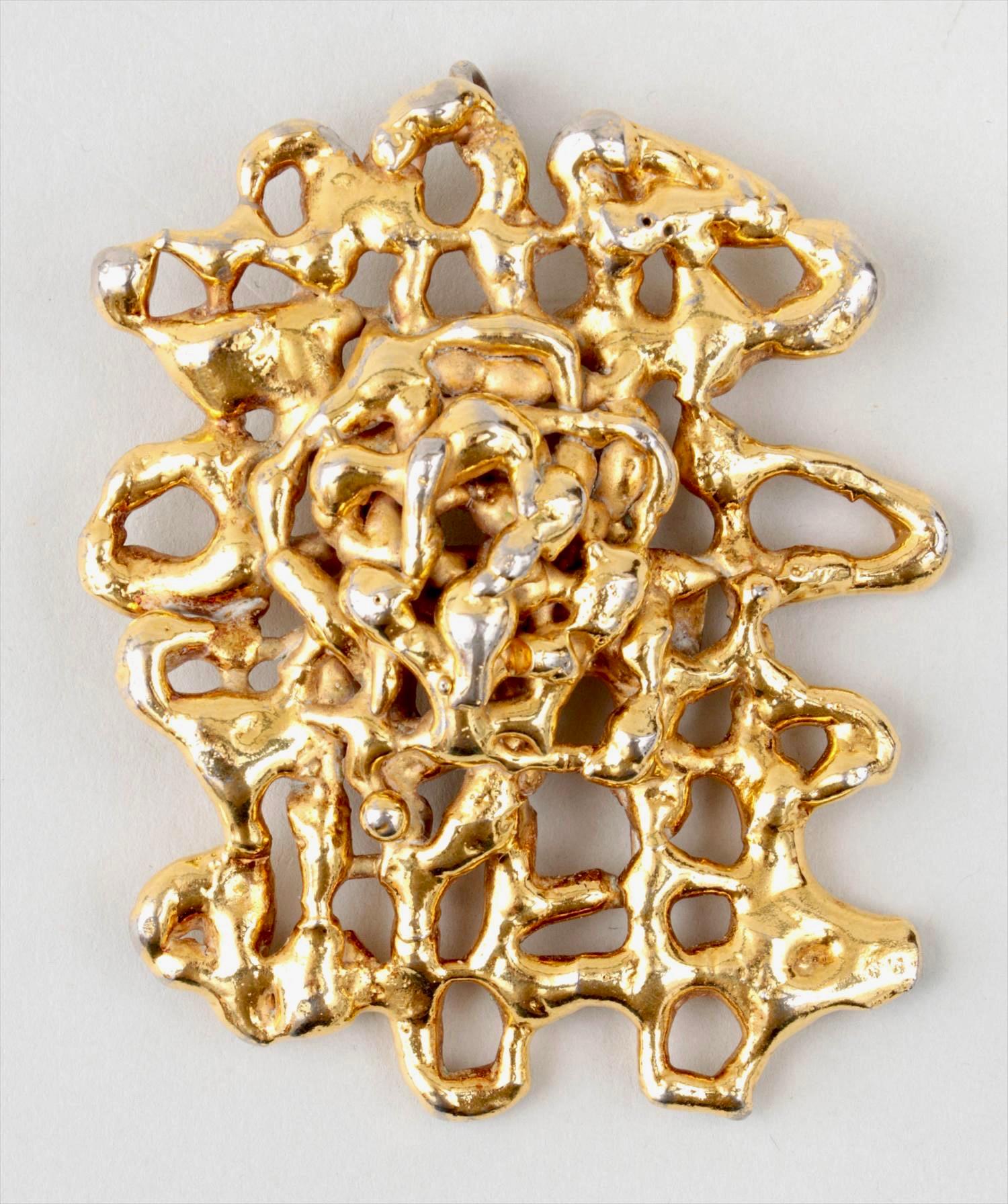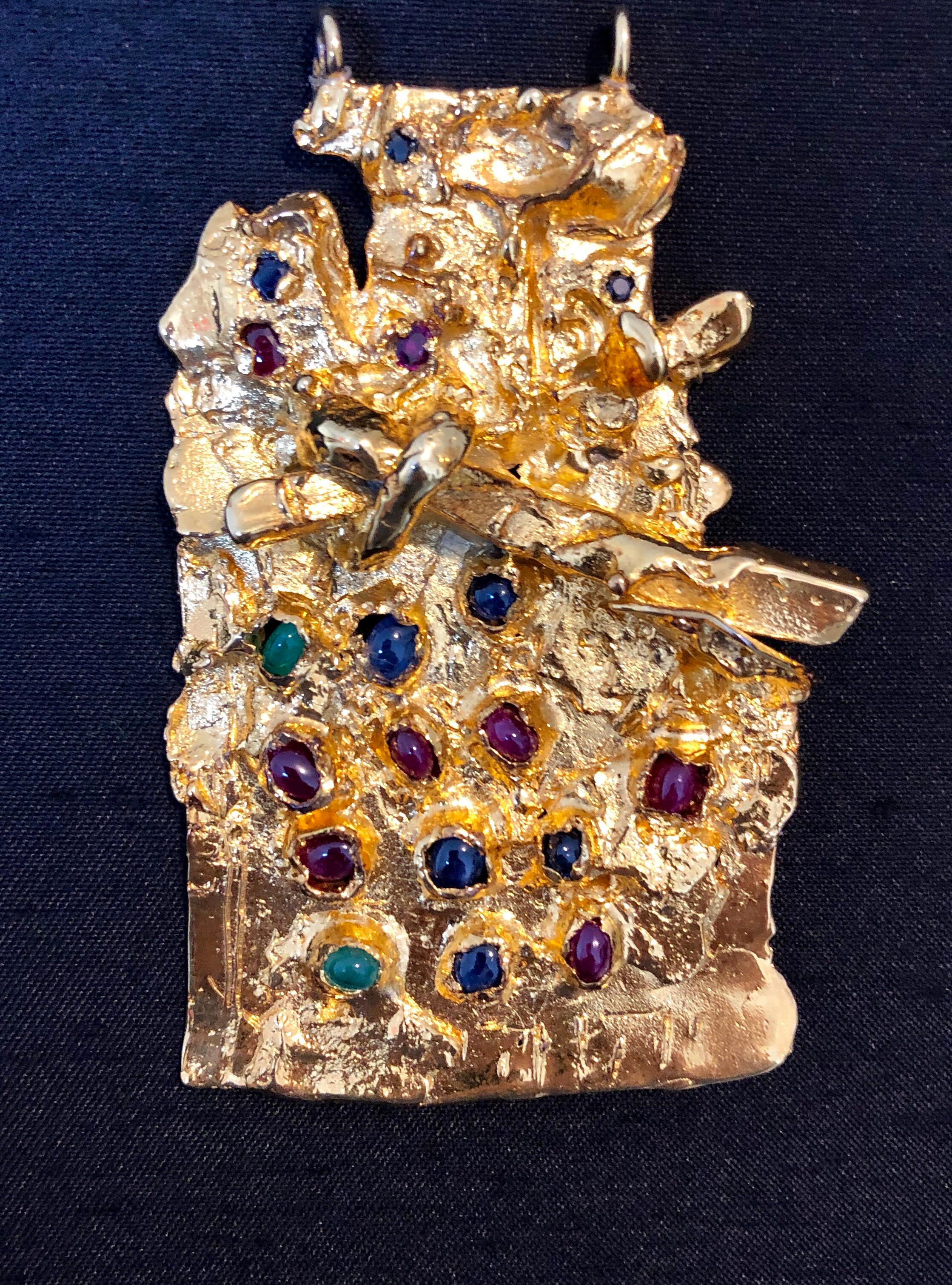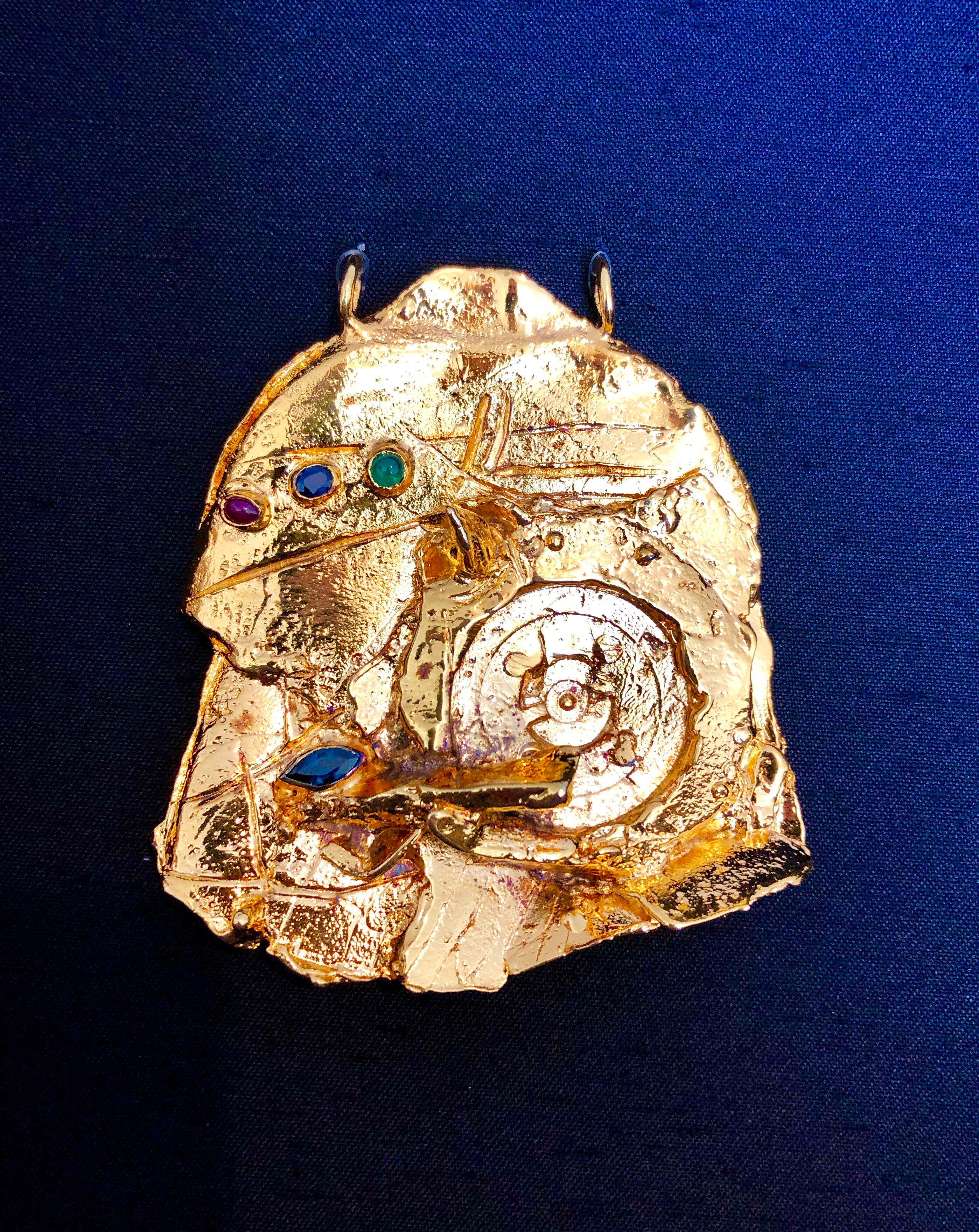Items Similar to Swiss French Imperial Neoclassic Mantel Clock 19th century
Want more images or videos?
Request additional images or videos from the seller
1 of 11
Honoré PonsSwiss French Imperial Neoclassic Mantel Clock 19th century1827
1827
About the Item
Imperial Mantel Clock signed on the clock face “Renard suc(cursale) de Frissard, à Rouen”. It’s in gilded bronze and the mechanism is still working. The figure represents a lady wearing a peplum, sandals an a laurel wreath on the head. She’s holding a cartouche and she's in a relaxed pose, while a lyre is laying on the other side. For the attributes, we can identify her as Euterpe, the Muse of Music.
The Frissard were an originally Swiss family who became extremely important for the watchmaking. Their bases were in Normandy (Rouen) and in Paris. Between 18th and 19th century they were so praised that Napoleon himself requested their services, Renard was a branch office. The mechanism belongs to Honore Pons, who was an incredibly talented and famous watchmaker, who received several "gold medals", including one in the 1827, as reported inside.
- Creator:Honoré Pons
- Creation Year:1827
- Dimensions:Height: 19.3 in (49 cm)Width: 13 in (33 cm)Depth: 5.12 in (13 cm)
- Medium:
- Period:
- Condition:
- Gallery Location:Florence, IT
- Reference Number:1stDibs: LU1240213364232
About the Seller
5.0
Vetted Seller
These experienced sellers undergo a comprehensive evaluation by our team of in-house experts.
Established in 1958
1stDibs seller since 2019
24 sales on 1stDibs
Typical response time: 5 hours
- ShippingRetrieving quote...Ships From: Florence, Italy
- Return PolicyA return for this item may be initiated within 2 days of delivery.
More From This SellerView All
- Allegorical bas-relief in bronze and wood with putto and cornucopiaLocated in Florence, ITBronze plaque (measurements without the wood are 12 x 20 cm) with bas-relief representing a putto with a cornucopia and the crescent moon. At the bottom runs in capital letters a Lat...Category
Mid-20th Century Other Art Style More Art
MaterialsBronze
- Mannerism Italian bronze firecracker mortar fireworks 17th centuryLocated in Florence, ITThis is an exemplar of a "mortaretto d'allegrezza", meaning "fire-craker/mortar fireworks of happiness" that was used during festivities (for exemplar, triumphal entries of kings or ...Category
17th Century Mannerist More Art
MaterialsBronze
- Allegorical mythological figurative bronze from the 19th centuryLocated in Florence, ITMarble-based bronze statuette depicting Cupid, holding an arrow in his hand, walking caressing a lion's mane, lowered in the act of affectionately licking his little foot. The subjec...Category
Mid-19th Century Romantic Figurative Sculptures
MaterialsMarble, Bronze
- 19th century French mythological figurative female bronze statuetteBy Joseph PolletLocated in Florence, ITLate 19th-century bronze figure derived from a work by Jean Michel-Angel Pollet-a Palermo artist of French parents who was a pupil of Bertel Thorvaldsen and Peter Tenerani - titled ...Category
Late 19th Century Art Nouveau Nude Sculptures
MaterialsBronze
- Bronzetto italiano figurativo allegorico della fine del XIX secoloLocated in Florence, ITBronzetto firmato alla base F. de Luca, artista meridionale attivo fra XIX e XX secolo, raffigurante un'allegoria delle Arti. In secondo piano, la "Scultura", identificata da un put...Category
Late 19th Century Other Art Style Figurative Sculptures
MaterialsBronze
- Tuscan Florentine Figurative Abstract Female Bronze Statue 20th centuryBy Quinto MartiniLocated in Florence, ITThe small bronze statue portrays a lady standing, with the arms lifted up to help her looking far away. It's an single cast. It can be dated to th...Category
1960s Post-War Abstract Sculptures
MaterialsBronze
You May Also Like
- Vintage Abstract Expressionist Ibram Lassaw Modernist Bronze Sculpture PendantBy Ibram LassawLocated in Surfside, FLIBRAM LASSAW (Russian-American, 1913-2003), Sculptural pendant Gold plated bronze Signed verso Measurements: 2-7/8''h, 2-1/4''w. Ibram Lassaw was born in Alexandria, Egypt, of Russian Jewish émigré parents. After briefly living in Marseille, France, Naples, Italy Tunis, Malta, and Constantinople, Turkey his family settled in Brooklyn, New York, in 1921.His family settled in Brooklyn, New York. He became a US citizen in 1928. Ibram Lassaw, one of America's first abstract sculptors, was best known for his open-space welded sculptures of bronze, silver, copper and steel. Drawing from Surrealism, Constructivism, and Cubism, Lassaw pioneered an innovative welding technique that allowed him to create dynamic, intricate, and expressive works in three dimensions. As a result, he was a key force in shaping New York School sculpture.He first studied sculpture in 1926 at the Clay Club and later at the Beaux-Arts Institute of Design in New York. He made abstract paintings and drawings influenced by Kandinsky, Sophie Taeuber Arp, and other artists. He also attended the City College of New York. Lassaw’s encounter with avant-garde art in the International Exhibition of Modern Art (1926), organized by the Société Anonyme at the Brooklyn Museum, made a powerful impression on him. In the early 1930s he explored new materials and notions of open-space sculpture. The ideas of László Moholy-Nagy and Buckminster Fuller were important to him, and he knew the work of Julio González, Pablo Picasso, and the Russian Constructivists. After experimenting with plaster, rubber and wire, Lassaw began working with steel, which became a frequent medium for the artist, along with other metals. His work reflects the influence of Surrealist artists such as Alberto Giacometti and Joan Miro as well as American Modernist Alexander Calder.A pioneer of abstract sculpture in the United States, in 1936 Lassaw was a founding member of the organization American Abstract Artists. Between 1933 and 1942 he worked for various federal arts projects: the Public Works of Art Project, Civil Works Authority, and WPA, the Works Progress Administration Federal Art Project. In 1938 he produced his first welded work. He served with the U.S. Army, where he learned direct welding techniques. During the 1940s he experimented with cage constructions and with acrylic plastics, adding color to his sculptures by applying dye directly to their surfaces. In 1949 Lassaw was a founder of the Club, an informal discussion group of avant-garde artists that had developed from gatherings at his studio, on Eighth Street. During the mid-1930s, Lassaw worked briefly for the Public Works of Art Project cleaning sculptural monuments around New York City. He subsequently joined the WPA as a teacher and sculptor until he was drafted into the army in 1942. Lassaw's contribution to the advancement of sculptural abstraction went beyond mere formal innovation; his promotion of modernist styles during the 1930s did much to insure the growth of abstract art in the United States. He was one of the founding members of the American Abstract Artists group, and served as president of the American Abstract Artists organization from 1946 to 1949. In 1951, Samuel Kootz invited Lassaw to join his gallery in New York. He also had a summer gallery in Provincetown, MA. Lassaw had been summering in Provincetown since 1944, and in 1951 rented an apartment next door to the Kootz Gallery. Among the artists in the Kootz Gallery were Jean Arp, William Baziotes, Georges Braque, Jean Dubuffet, Herbert Ferber, Arshile Gorky, Adolph Gottlieb, David Hare, Hans Hofmann, Fernand Leger, Georges Mathieu, Joan Miró, Robert Motherwell, Pablo Picasso, Pierre Soulages, and Maurice de Vlaminck. Lassaw is a sculptor who was a part of the New York School of Abstract expressionism during the 1940s and 1950s. Jackson Pollock, Lee Krasner, James Brooks, Willem de Kooning, and several other artists like Lassaw spent summers on the Southern Shore of Long Island. Lassaw spent summers on Long Island from 1955 until he moved there permanently in 1963. SELECT EXHIBITIONS 1961 International Exhibition of Modern Jewelry 1890–1961, organized by the Worshipful Company of Goldsmiths in association with the Victoria and Albert Museum, London 1967 Exhibition of Jewelry by Painters and Sculptors, organized for circulation by MoMA 1973 Jewelry...Category
Mid-20th Century Abstract Expressionist Abstract Sculptures
MaterialsGold, Bronze
- Gold Gilt Bronze Sculpture Pendant Art Israeli Tumarkin Abstract SurrealistLocated in Surfside, FLMeasures about 5.25 X 3.75 inches. Box is 17 X 13 inches. Signed by artist verso. From the literature that I have seen I believe the edition size was limited to 10, I do not know if ...Category
1960s Surrealist Abstract Sculptures
MaterialsGold, Bronze
- Gold Gilt Bronze Sculpture Necklace Art Israeli Tumarkin Abstract SurrealistLocated in Surfside, FLMeasures about 4 X 3.75 inches. Box frame is 17 X 13 inches. Signed by artist verso. From the literature that I have seen I believe the edition size was limited to 10, I do not know ...Category
1960s Modern Abstract Sculptures
MaterialsGold, Bronze
- Gold Gilt Bronze Sculpture Pendant Israeli Tumarkin Abstract Modernist JewelryLocated in Surfside, FLMeasures about 4.25 X 2.25 inches. Box frame is 17 X 13 inches. Signed by artist verso. From the literature that I have seen I believe the edition size was limited to 10, I do not kn...Category
1960s Modern Abstract Sculptures
MaterialsGold, Bronze
- Gilt Bronze Sculpture Brooch Wearable Art Israeli Tumarkin Abstract SurrealistLocated in Surfside, FLMeasures about 3.75 X 3.5 inches. Box is 11 X 11 inches. (Piece is in excellent condition. box frame has some minor wear and piece might need to be remounted, it has been removed and...Category
1960s Surrealist Abstract Sculptures
MaterialsGold, Bronze
- Double Sided Gold Plated Medallion (Limited Edition; Signed and Stamped)By Arnaldo PomodoroLocated in New York, NYARNALDO POMODORO Double Sided Gold Plated Medallion, 1985 Bronze with Gold Patina 2 7/10 × 2 7/10 × 3/10 inches Limited Edition of 500 Signed by artist with incised signature; Stampe...Category
1980s Abstract Geometric Abstract Sculptures
MaterialsGold, Bronze
Recently Viewed
View AllMore Ways To Browse
Neoclassic Art
Antique Imperial
Antique Gold Medal
Relax Art
French Neoclassical Art
Swiss Music
Swiss 18th Century
Antique Rouen
Antique Watchmaker
18th Century Napoleon
Gold Laurel Wreath
Napoleon Medal
Napoleon Medalion
Antique Swiss Clock
Swiss Antique Clocks Swiss Antique Clocks
Neoclassical Mantel Clock
Pon Pon
18th Century Lyre





